The NVIDIA GeForce GTX 1080 & GTX 1070 Founders Editions Review: Kicking Off the FinFET Generation
by Ryan Smith on July 20, 2016 8:45 AM ESTNVIDIA Works: ANSEL & VRWorks Audio
Along with the various hardware aspects of Pascal, NVIDIA’s software teams have also been working on new projects to coincide with the Pascal launch. These are a new screenshot tool, and a new audio simulation package based on path traced audio.
We’ll start with NVIDIA’s new screenshot utility. Dubbed ANSEL, after famous American environmental photographer Ansel Adams, ANSEL is a very different take on screenshots. Rather than taking screenshots from the player’s perspective at the game rendering resolution, ANSEL allows for an entire scene to be captured at a far higher resolution than with standard screenshots. NVIDIA is pitching this as an art tool rather than a gaming tool, and I get the impression that this is one of those pie-in-the-sky kind of ideas that NVIDIA’s software group decided to run with in order to best show off Pascal’s various capabilities.
At its core, ANSEL is a means to decouple taking screenshot from the limitations of the player’s view. In an ANSEL-enabled application, ANSEL can freeze the state of the game, move the camera around, and then generate a copious amount of viewports to take screenshots. The end result is that ANSEL makes it possible to generate an ultra-high resolution 360 degree stereo 3D image of a game scene. The analogy NVIDIA is working towards is dropping a high quality 360 degree camera into a game, and letting users play with it as they see fit.
But even this isn’t really a great description of ANSEL, as there isn’t anything else like it to compare it to. Some games have offered 360 degree capture, but they haven’t done so at any kind of resolution approaching what ANSEL can do. And this still doesn’t touch features such as HDR (FP16) scene capture or the free camera.
Under the hood, ANSEL is at times a checklist for Pascal technologies (though it does work with Maxwell 2 as well). In order to capture scenes at a super high resolution, it forces a scene to its maximum LOD and breaks it down into a number of viewports, implemented efficiently using SMP. To demonstrate this technology NVIDIA put together a 4.5Gpix image rendered out of The Witcher 3, which was composed of 3600 such viewport tiles. Meanwhile stitching together the individual tiles is a CUDA based rendering process, which uses overlapping tiles to resolve any tone mapping conflicts. Finally, ANSEL captures images before they’re actually sent to a display, grabbing HDR images (in EXR format0 in games that support HDR.
Meanwhile given its level of deep interaction with games, ANSEL does require individual game support to work. This is in the form of a library provided by NVIDIA, which helps ANSEL and NVIDIA’s driver make sense of a scene and pause the simulation when necessary. Unsurprisingly, NVIDIA is eager to get ANSEL into more games – it just launched on Mirror’s Edge: Catalyst – and as a result is touting to developers that ANSEL is easy to implement, having taken only 150 lines of code on The Witcher 3.
Ultimately NVIDIA seems to be throwing ANSEL at the wall here to see what sticks. But it should be neat to see what users end up doing with the technology,
VRWorks Audio
Not to be outdone by the ANSEL team, other parts of NVIDIA’s software group has been working on a slightly different kind of project for NVIDIA: audio. As a GPU company, NVIDIA has never been deeply involved with audio (not since getting out of the chipset business, at least), but with the current focus on VR, they are taking a crack at it in a new way.
VRWorks Audio is the latest library as part of NVIDIA’s larger VRWorks suite. As given away by the name, this library is focused on audio, specifically for VR. In a nutshell, VRWorks is a full audio simulation library, using path tracing to power the simulation. The goal of VRWorks Audio is to provide a realistic sound simulation for VR, to further increase the apparent realism.
Under the hood, VRWorks audio leverages NVIDIA’s existing OptiX path tracing technology. Only rather than tracing light it’s used to trace sound waves. Along with simulating audio propagation itself – including occlusion and reverb – VRWorks Audio is also able to run the necessary Head Related Transfer Functions (HRTFs) to reduce the simulation down to binaural audio for headphones.
All of this is, of course, executed on Pascal’s CUs in a manner similar to path tracing or PhysX, running alongside the main graphics rendering thread. The amount of processing power required for VRWorks Audio can vary considerably depending on the detail desired (particularly the number of reflections); for NVIDIA’s VR Funhouse demo, VR Works audio can occupy most of a GPU on its own.
Ultimately, unlike some of the other technologies presented by NVIDIA, VRWorks Audio is in a relatively early stage. As a result while NVIDIA is shipping the SDK, there aren’t any games that are announced to be using it at this time, and if it gets any traction it’ll be farther into the future before we see the first games using it. That said, NVIDIA is already reaching out to the all-important middleware vendors on the subject, and to that end their own VR Funhouse demo is using FMOD with a VRWorks Audio plugin to handle the sound, demonstrating that they already have VRWorks Audio working with the popular audio middleware.



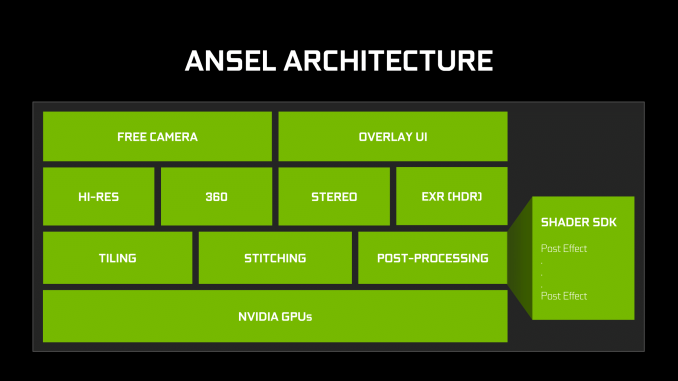
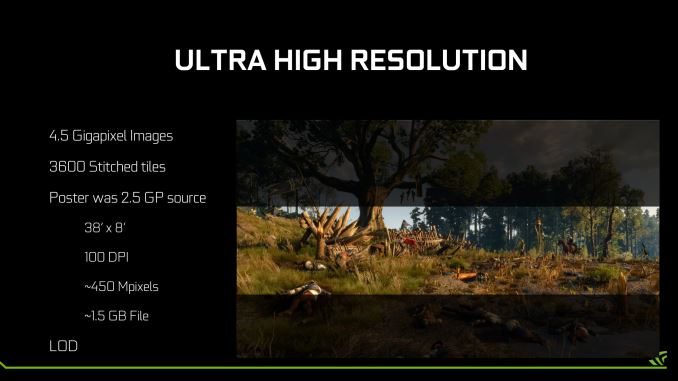
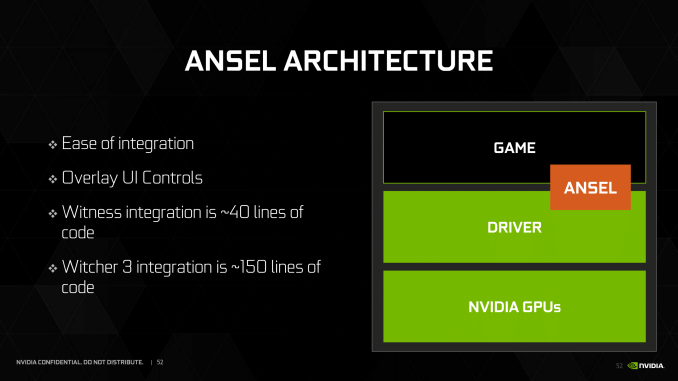
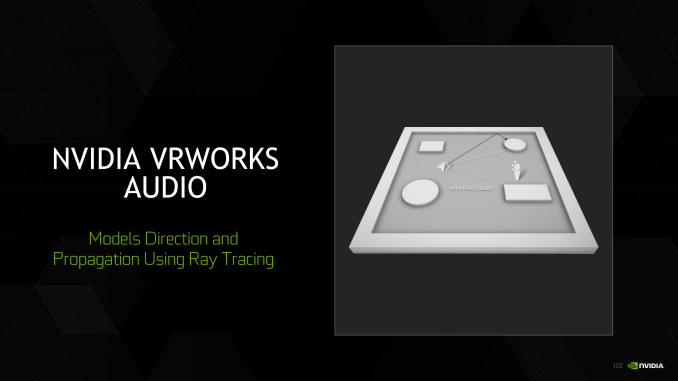
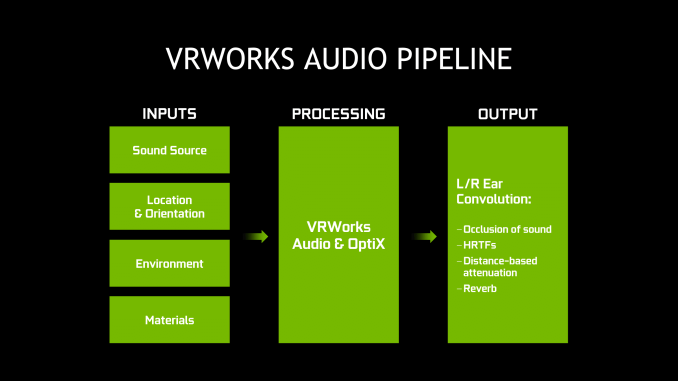








200 Comments
View All Comments
TestKing123 - Wednesday, July 20, 2016 - link
Sorry, too little too late. Waited this long, and the first review was Tomb Raider DX11?! Not 12?This review is both late AND rushed at the same time.
Mat3 - Wednesday, July 20, 2016 - link
Testing Tomb Raider in DX11 is inexcusable.http://www.extremetech.com/gaming/231481-rise-of-t...
TheJian - Friday, July 22, 2016 - link
Furyx still loses to 980ti until 4K at which point the avg for both cards is under 30fps, and the mins are both below 20fps. IE, neither is playable. Even in AMD's case here we're looking at 7% gain (75.3 to 80.9). Looking at NV's new cards shows dx12 netting NV cards ~6% while AMD gets ~12% (time spy). This is pretty much a sneeze and will as noted here and elsewhere, it will depend on the game and how the gpu works. It won't be a blanket win for either side. Async won't be saving AMD, they'll have to actually make faster stuff. There is no point in even reporting victory at under 30fps...LOL.Also note in that link, while they are saying maxwell gained nothing, it's not exactly true. Only avg gained nothing (suggesting maybe limited by something else?), while min fps jumped pretty much exactly what AMD did. IE Nv 980ti min went from 56fps to 65fps. So while avg didn't jump, the min went way up giving a much smoother experience (amd gained 11fps on mins from 51 to 62). I'm more worried about mins than avgs. Tomb on AMD still loses by more than 10% so who cares? Sort of blows a hole in the theory that AMD will be faster in all dx12 stuff...LOL. Well maybe when you force the cards into territory nobody can play at (4k in Tomb Raiders case).
It would appear NV isn't spending much time yet on dx12, and they shouldn't. Even with 10-20% on windows 10 (I don't believe netmarketshare's numbers as they are a msft partner), most of those are NOT gamers. You can count dx12 games on ONE hand. Most of those OS's are either forced upgrades due to incorrect update settings (waking up to win10...LOL), or FREE on machine's under $200 etc. Even if 1/4 of them are dx12 capable gpus, that would be NV programming for 2.5%-5% of the PC market. Unlike AMD they were not forced to move on to dx12 due to lack of funding. AMD placed a bet that we'd move on, be forced by MSFT or get console help from xbox1 (didn't work, ps4 winning 2-1) so they could ignore dx11. Nvidia will move when needed, until then they're dominating where most of us are, which is 1080p or less, and DX11. It's comic when people point to AMD winning at 4k when it is usually a case where both sides can't hit 30fps even before maxing details. AMD management keeps aiming at stuff we are either not doing at all (4k less than 2%), or won't be doing for ages such as dx12 games being more than dx11 in your OS+your GPU being dx12 capable.
What is more important? Testing the use case that describes 99.9% of the current games (dx11 or below, win7/8/vista/xp/etc), or games that can be counted on ONE hand and run in an OS most of us hate. No hate isn't a strong word here when the OS has been FREE for a freaking year and still can't hit 20% even by a microsoft partner's likely BS numbers...LOL. Testing dx12 is a waste of time. I'd rather see 3-4 more dx11 games tested for a wider variety although I just read a dozen reviews to see 30+ games tested anyway.
ajlueke - Friday, July 22, 2016 - link
That would be fine if it was only dx12. Doesn't look like Nvidia is investing much time in Vulkan either, especially not on older hardware.http://www.pcgamer.com/doom-benchmarks-return-vulk...
Cygni - Wednesday, July 20, 2016 - link
Cool attention troll. Nobody cares what free reviews you choose to read or why.AndrewJacksonZA - Wednesday, July 20, 2016 - link
Typo on page 18: "The Test""Core i7-4960X hosed in an NZXT Phantom 630 Windowed Edition" Hosed -> Housed
Michael Bay - Thursday, July 21, 2016 - link
I`d sure hose me a Core i7-4960X.AndrewJacksonZA - Wednesday, July 20, 2016 - link
@Ryan & team: What was your reasoning for not including the new Doom in your 2016 GPU Bench game list? AFAIK it's the first indication of Vulkan performance for graphics cards.Thank you! :-)
Ryan Smith - Wednesday, July 20, 2016 - link
We cooked up the list and locked in the games before Doom came out. It wasn't out until May 13th. GTX 1080 came out May 14th, by which point we had already started this article (and had published the preview).AndrewJacksonZA - Wednesday, July 20, 2016 - link
OK, thank you. Any chance of adding it to the list please?I'm a Windows gamer, so my personal interest in the cross-platform Vulkan is pretty meh right now (only one title right now, hooray! /s) but there are probably going to be some devs are going to choose it over DX12 for that very reason, plus I'm sure that you have readers who are quite interested in it.